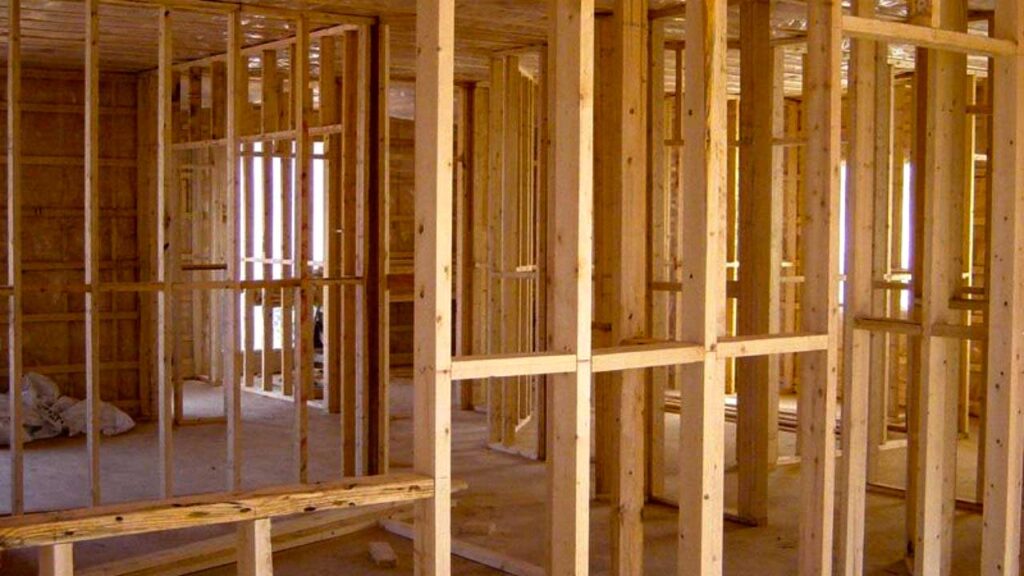
Wall Framing elements are comprised of wall studs, wall sheathing and top and bottom plates which are prefabricated on a flat surface and then lifted into position in the building. Timber wall frames are tied together with plywood sheathing nailed to the face of the timber studs. Stud walls and plywood provide resistance to lateral loads to the plane of the wall. Windows or door headers are supported by Jack studs also known as jamb or trimmer studs.
Beams that support the weight of the wall framing above the door and window opening as well as loads from the roof and roof framing are called header beams. Header beams are made from sawn timber, laminated timber, veneer timber, strand timber or timber members joined together.
Overhanging cantilever beams can be used for roof framing to protect exterior façade from rain or to provide shade for windows
When selecting the timber for wall frames it is important to remember that wood’s strength is affected by the direction of the load relative to the direction of the grain of the wood. As a natural material timber varies as it is nonhomogeneous and is very dependent on environmental conditions.
The strength of timber depends on the direction of wood grain which can be parallel, radial or tangential. Several factors affect the strength of timber: temperature, the direction of primary stress, size and shape, defects, duration of load, moisture content, species.
Please send us construction plans so we can provide an approximate quote and advise what type of timber is suitable for your timber wall frames and trusses